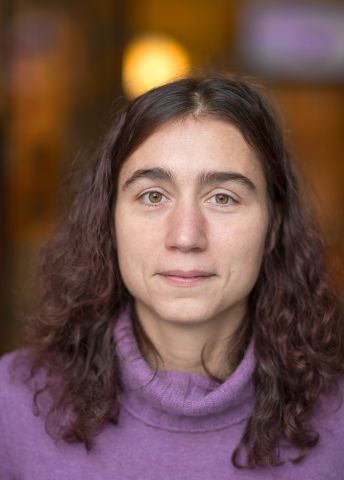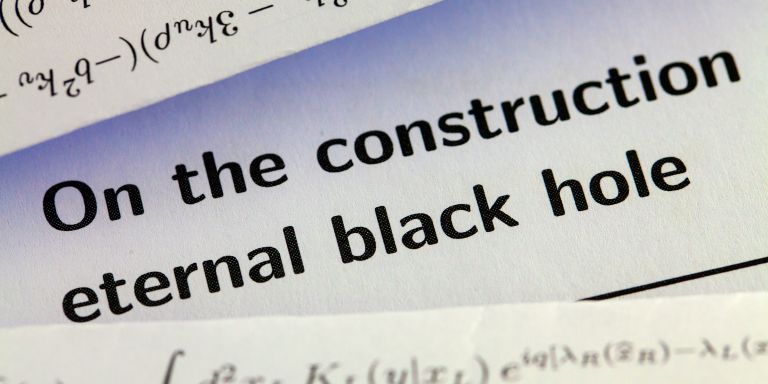
Monica Guica
PhD Theoretical Physics
Wallenberg Academy Fellow 2015
Institution:
Uppsala University
Research field:
Quantum gravitation via spinning black holes and holography


Wallenberg Academy Fellow 2015
Institution:
Uppsala University
Research field:
Quantum gravitation via spinning black holes and holography
Guica appears at the door of Nordita, the Nordic Institute for Theoretical Physics, which is housed in a yellow stone building at the AlbaNova Center for Physics, Astronomy and Biotechnology in Stockholm. Here, she is researching into the most fundamental laws of physics. Her aim is to understand how gravity can be described at quantum level. Her approach involves theoretical studies of rapidly spinning black holes and holography.
“It’s a question of understanding how everything fits together in the universe.”
The setting for the interview could hardly be better. A little way away, in an auditorium at Stockholm University, the 2017 Nobel lecture on the discovery of gravitational waves is in progress. Gravitational waves are the result of a collision between two black holes 1.3 billion light years away. Their detection proved the existence of black holes, which Einstein had predicted in his general theory of relativity.
Finding gravitational waves amidst all the background noise in space required an extraordinarily sensitive detector. Monica Guica uses a pen and paper in her research.
“When I tell people I’m researching into black holes, they wonder whether I use data or telescope images. I then explain that my work consists solely of equations – it’s highly theoretical. But I do believe that on-going gravity experiments are extremely important, so I’ve included an extra part on gravitational waves in my lectures on the general theory of relativity.”
Her interest in physics began when she was only twelve years old, in Rumania, her home country.
“I had a fantastic physics teacher – she explained everything in such a fun way.”
Following successes in International Physics Olympiads, Guica won a scholarship to study at university in the United States. Some years later, having completed her doctorate at Harvard University, Guica took up postdoctoral positions in France and the U.S., before moving to Sweden in 2014.
The grant she has been awarded as a Wallenberg Academy Fellow has given her the opportunity to establish her own research team here. She divides her time between Nordita and Uppsala University.
“Here at Nordita I can concentrate on research. It’s a really dynamic environment, which suits me. New ideas may begin in a discussion during coffee-break, or come from an article I read by a fellow researcher.”
Black holes are formed when huge massive stars die and collapse in on themselves. Here, the gravitational pull is so strong that nothing can escape the black hole, not even light. Although we now know that black holes exist, pieces of the theoretical puzzle are missing. The general theory of relativity describes gravity, and how it affects time and space, but it does not cover everything.
“The gravitational theory is used to calculate what happens on larger scales – what we can see, but for very small distances and particles, quantum mechanics and quantum field theory are needed,” Monica Guica explains.
The problem that many physicists are keen to solve is that these two well tried and tested theories clash with each other. The study of black holes highlights the problem. Yet the black holes themselves may also help us understand how to reconcile the general theory of relativity with quantum mechanics.
To support her research, Guica is using “string theory”, the mathematical model that is currently best able to describe quantum gravitation. String theory sees elementary particles like quarks and leptons not as being point-like, but as vibrating subatomic strings.
“The study of black holes in string theory has led to huge progress in understanding quantum gravity in a particular spacetime background known as anti-de Sitter space. The only problem is that our universe does not at all look like anti-de Sitter”, says Guica.
Her research is focused on developing quantum gravity theories for spacetimes that occur in the real world. This is a very hard problem, but she found that concentrating on the region close to the horizon of a rapidly rotating black hole may allow her to crack the problem.
“The funding I receive as a Wallenberg Academy Fellow allows me to concentrate more on research. I can develop my ideas to gain a fundamental understanding of gravity and holography.”
explains that they believe gravity to be holographic, and she use the mathematical toolbox for holography in string theory to further develop her theories.
She stands up and draws arrows and lines on the whiteboard, while describing holography as having access to all data in the three-dimensional image one sees, but it is coded on a two-dimensional surface.
“In my research, I’m trying to understand how gravity in our world occurs as a hologram effect from realistic and maximally spinning black holes. My work involves putting some mathematical meat on the bones of these theoretical ideas."
Text Susanne Rosén
Translation Maxwell Arding
Photo Magnus Bergström